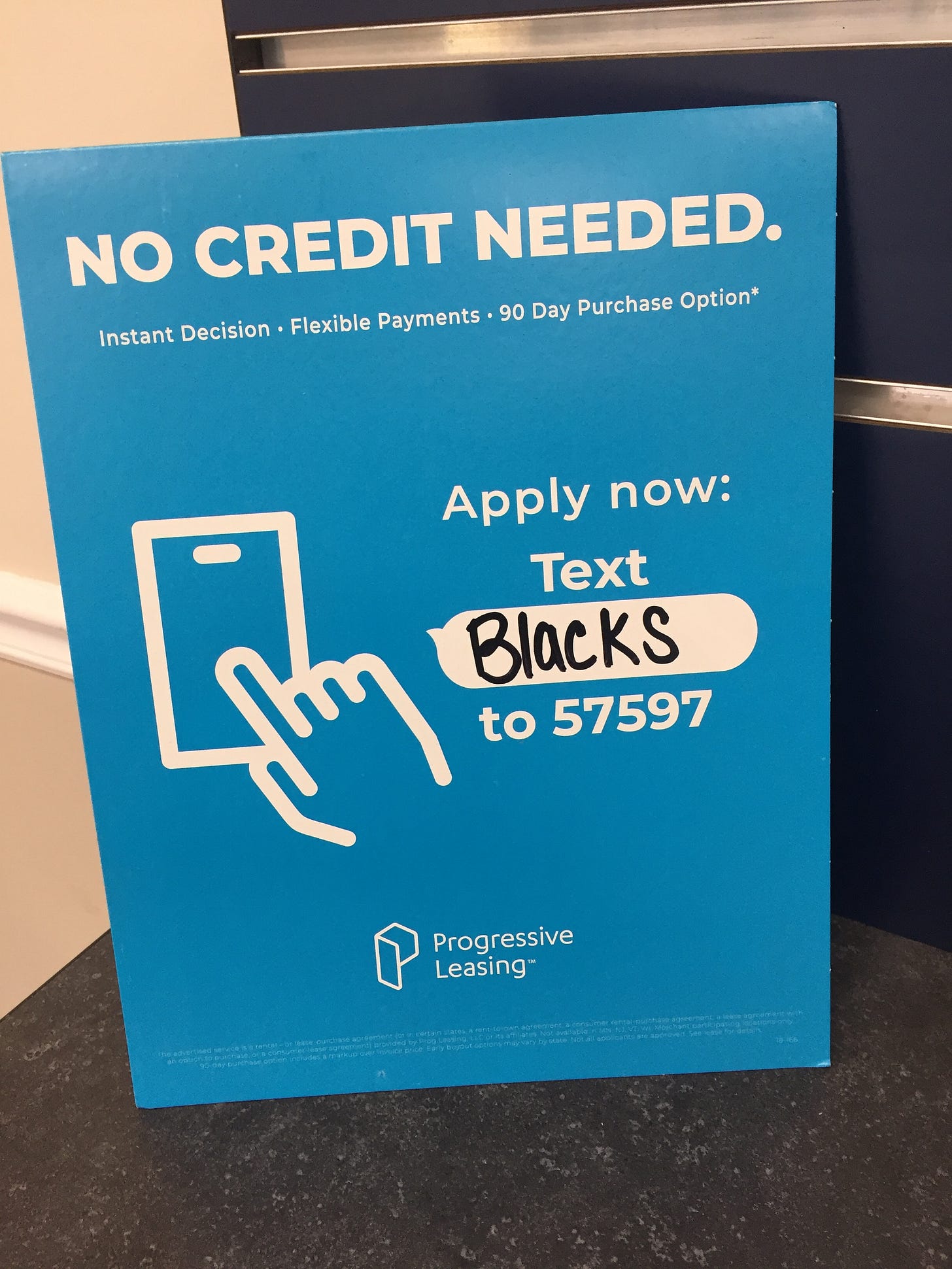A quick lesson on the importance of context and implicit bias "blacks"
What do you see? And why?
Take a look at this photo and tell me where your mind immediately goes. I don’t mean your thinking mind, but the part of your brain that’s on automatic.
My implicit bias - or more accurately, implicit association - led me to a quick chuckle when I saw the word “blacks” here. I chuckled because I was in Black’s Tire and Auto Service near Myrtle Beach, S.C., paying for car repairs when I saw this sign, so I understood why it says to text “blacks”. But if I had seen this sign in some other setting stripped of that context, I know how quickly my mind could have wandered into some darker territory even if I didn’t want it to.
Are they saying black people don’t have good credit or need a handout?!!
That’s how implicit bias (association) works. It taps into the unthinking portion of your brain, the part that responds automatically to certain kinds of stimuli. Our brains love identifying patterns to help us make sense of a world drowning in a never-ending stream of stimuli. It’s a really good thing most of the time. It’s just that in this country, because of our history, racial stereotypes are rolling around in our brains even when we don’t want them to, especially negative images of black people. Because of our history, our brains have been trained to see associations between black people and negative traits. That’s why no one should be judged harshly about implicit bias because it’s not a true reflection of our most thoughtful selves. It’s what we do with those automatic images in our minds, how we respond to them, that matters most.



